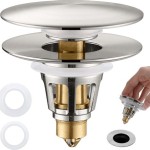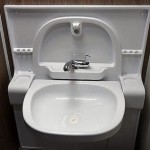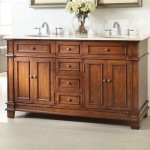How To Remove Bathroom Paint From Furniture Without Damaging The Finish
Bathroom paint, often used for its resilience and moisture resistance, can be a challenge to remove from furniture without causing damage. The key is to use gentle methods that target the paint without harming the underlying finish. This article will guide you through effective techniques for removing bathroom paint from furniture, ensuring the preservation of the original surface.
1. Assess the Paint and Furniture
Before embarking on the removal process, it is crucial to understand the type of paint and the material of the furniture. Bathroom paint is typically acrylic latex or oil-based, each requiring different approaches. Similarly, understanding the material of the furniture, whether it's wood, metal, plastic, or another material, will dictate the appropriate cleaning agents and tools.
Observe the overall condition of the paint. If it is fresh and still wet, a simple damp cloth might suffice. However, for dried paint, you need a more robust approach. Assess the furniture's finish as well. Is it delicate, such as a high-gloss veneer, or more robust, like a lacquered surface? This will help you choose the right tools and cleaning agents to avoid scratches or other damage.
2. Gentle Removal Methods
Start with the least abrasive methods and gradually escalate if necessary. Here are some effective approaches for removing bathroom paint from furniture:
a. Warm Soapy Water
For recently applied paint, warm soapy water can be surprisingly effective. Simply mix a mild dish soap with warm water in a bowl. Dip a soft cloth into the solution and gently rub the affected area. The soapy water should loosen the paint, allowing it to come off with the cloth. Rinse the area thoroughly after cleaning.
b. Paint Thinner
If the paint is dry and soapy water doesn't work, use a paint thinner specific to the type of paint. Always test the thinner on a discreet area of the furniture first to ensure it doesn't damage the finish. If it's safe, apply the thinner to a cloth and gently rub the paint until it starts to loosen. Be careful not to soak the furniture, as this can damage the underlying wood. Rinse the area thoroughly with clean water after removing the paint.
c. Heat Gun
A heat gun can effectively soften paint, making it easier to remove. Aim the heat gun over the paint, maintaining a safe distance to avoid burning the furniture. As the paint softens, use a scraper or putty knife to gently remove the paint. Be cautious and work in small sections to avoid overheating the furniture.
d. Chemical Strippers
Chemical strippers are potent solutions that can effectively remove paint, but their use requires caution. Always wear gloves and protective eyewear when handling chemical strippers. Apply the stripper to the painted area following the manufacturer's instructions, and allow it to sit for the recommended time. After the paint softens, use a scraper or putty knife to remove it. Rinse the area thoroughly with water and neutralize any remaining stripper residue.
3. Post-Cleaning Care
After removing the paint, it's essential to care for the furniture to restore its original finish. Here are some steps:
a. Clean Thoroughly
Remove any remaining residue from the paint removal process. Thoroughly rinse the affected area with clean water and dry it completely. You may need to use a mild cleaner specific to the furniture's material to remove any lingering residue.
b. Polish or Wax
For wooden furniture, consider polishing or waxing the surface to restore its shine and protect it from future damage. Use a polish or wax suitable for the type of wood and its finish. Apply the polish or wax in a thin, even layer and buff it to a smooth finish.
c. Protect
Consider applying a protective sealant to the cleaned furniture to prevent future paint stains. This could be a clear coat of varnish, polyurethane, or another sealant depending on the furniture's material and finish. Follow the manufacturer's instructions for application and drying time.
By following these tips, you can effectively remove bathroom paint from furniture without harming the underlying finish. Remember to work gradually, using appropriate tools and cleaners for each type of paint and material. With care and patience, your furniture can be restored to its original beauty.

How To Remove Paint From Furniture Without Damaging The Finish 6 Ways Alternative And Tips

How To Remove Paint From Furniture Without Damaging The Finish 6 Ways Alternative And Tips

The Easiest Way To Remove Paint From Your Old Wood Furniture

The Easiest Way To Remove Paint From Your Old Wood Furniture

How To Get Rid Of Paint Spills Splatters And Mistakes Even After They Ve Dried The Creek Line House

Removing Paint From Wood How To Remove

Removing Paint From Wood How To Remove
The Best Paint And Varnish Strippers We Tested For Diy Furniture Projects

How To Remove Spray Paint
The Best Paint And Varnish Strippers We Tested For Diy Furniture Projects
Related Posts







